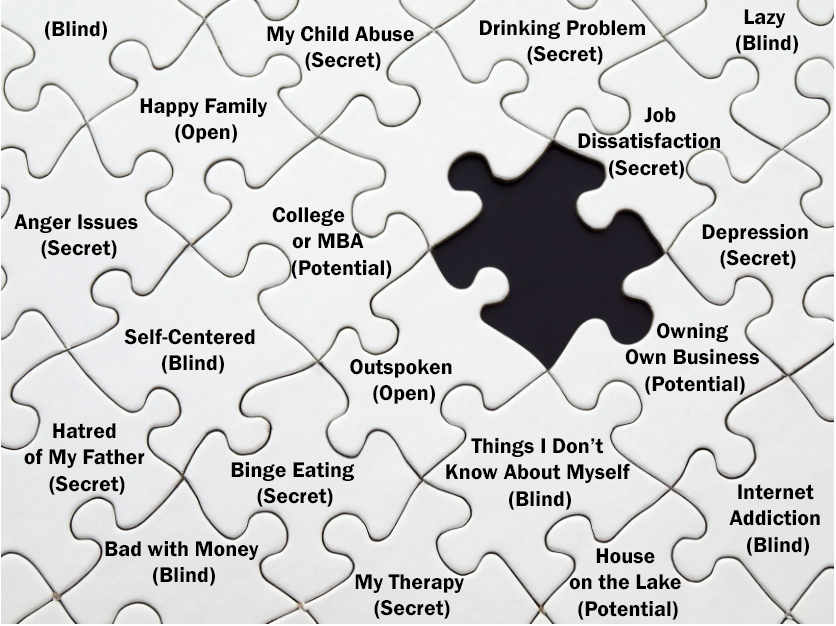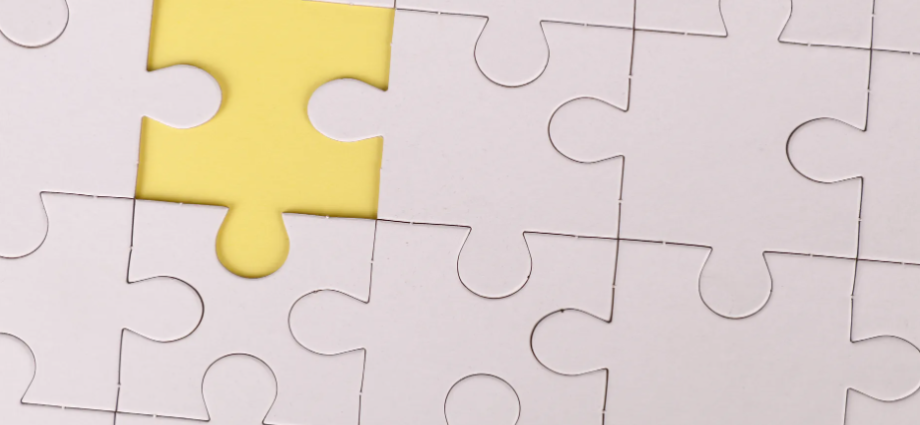|
|
In many ways each of us is rather like a puzzle with many pieces. On most days it seems like all of the pieces fit together perfectly. On other days however, there are parts that we just don’t understand, and don’t fit quite right. Some pieces never fit correctly no matter how hard we try to force them and some parts we don’t even recognize.
Therapy is a process of understanding ourselves, of understanding all of the different parts that fit together, all the parts that don’t, plus all of the parts left over that we don’t or won’t recognize, that we are blind to.
What if we could illustrate ourselves as a likeness of a puzzle with every part identified and labeled and all of the parts fitting snugly in place? We could see all of our qualities, good and bad, and we could really get to know ourselves better.
Life Is Complicated
But your life is much more complicated than this. So let’s take our purzzle to another level. Let’s have each piece of our puzzle have another identifying factor. Some parts are “open” so that anyone can see them but some parts are “secret” and very private. Those only you can see. These may be a problem for you. An obstacle that you have difficulty facing alone. Maybe you could consider sharing it or them with your spouse, partner or family? Some parts are yet to be realized. They are your “potential.” It’s good to identify these parts and arrange your life to achieve your goals and ambitions. And there are some parts that you simply cannot see but others can and do. These are your “blind” parts and the sooner you get to know them the better you will feel.
It’s Your Life and Your Puzzle
Below is an exampole of how your puzzle could look all filled in. There is also a blank version for you to work on or you can design your own version with more pieces. You might even use different colors with hi-lighters, or crayons if you choose. It’s your life and it’s your puzzle. Since your life is complicated, several important factors must be adhered to:

- There must be ten or more pieces, indicative of complexity,
- More than three sizes, indicating self perception, and…
- Descriptions showing moods and emotions, motivating factors, relationships, critical issues and values.
Placement of the pieces is important too. Some pieces are larger and more important than others. And don’t forget to add “open” “secret” “potential” and “blind.”
You might need a little help identifying those blind pieces, so take your time and get to know yourself.
This report is not a diagnosis. We hope this information can guide you into improving your life.
Review our Knowledge Base or the links displayed on this page for similar and related topics.

